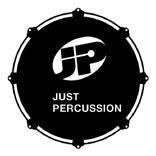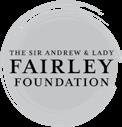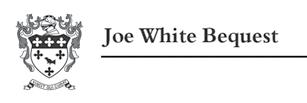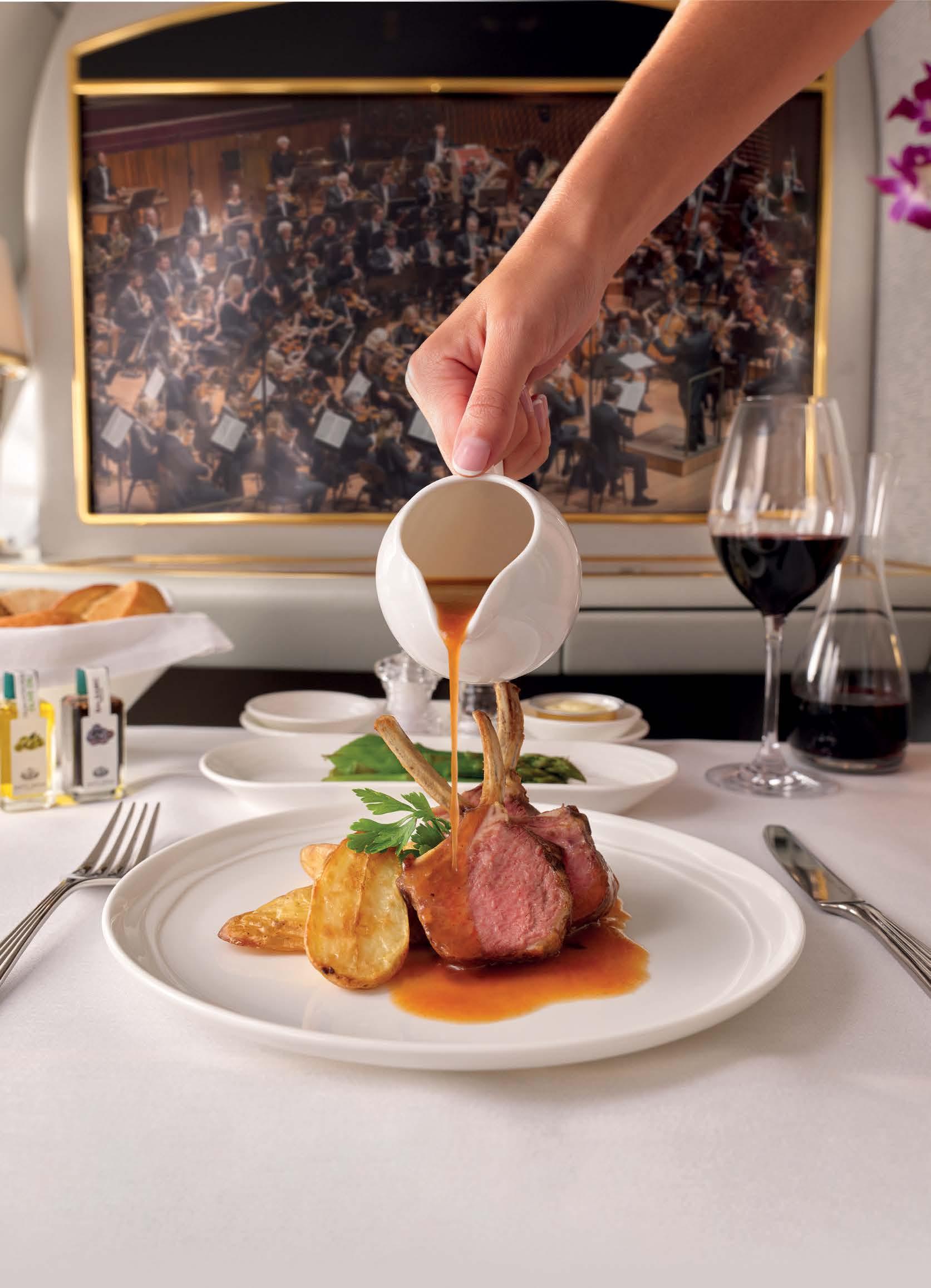November 2025

Ryman Healthcare Spring
MSO Mornings: Respighi’s Rome New Worlds
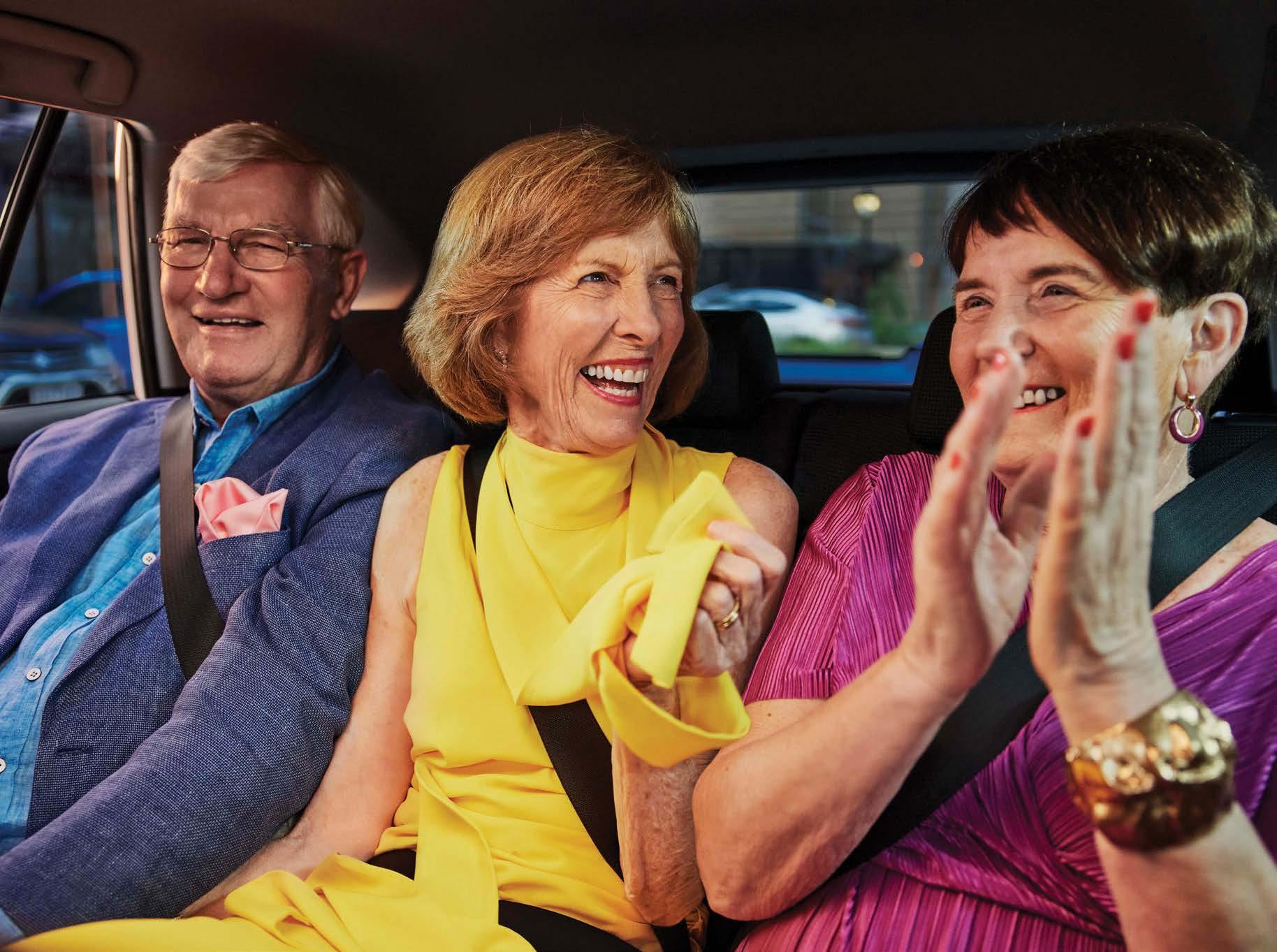



November 2025

Ryman Healthcare Spring
MSO Mornings: Respighi’s Rome New Worlds



In the first project of its kind in Australia, the MSO has developed a musical Acknowledgement of Country with music composed by Yorta Yorta composer Deborah Cheetham Fraillon ao, featuring Indigenous languages from across Victoria.
Generously supported by the Helen Macpherson Smith Trust and the Commonwealth Government through the Australian National Commission for UNESCO, the MSO is working in partnership with Short Black Opera and Indigenous language custodians who are generously sharing their cultural knowledge.
The Acknowledgement of Country allows us to pay our respects to the traditional owners of the land on which we perform in the language of that country and in the orchestral language of music.

As a Yorta Yorta/Yuin composer, the responsibility I carry to assist the MSO in delivering a respectful acknowledgement of country is a privilege which I take very seriously. I have a duty of care to my ancestors and to the ancestors on whose land the MSO works and performs. As the MSO continues to grow its knowledge and understanding of what it means to truly honour the First People of this land, the musical acknowledgement of country will serve to bring those on stage and those in the audience together in a moment of recognition as we celebrate the longest continuing cultures in the world.
—Deborah Cheetham Fraillon ao
Our musical Acknowledgement of Country, Long Time Living Here by Deborah Cheetham Fraillon ao, is performed at MSO concerts.


The Melbourne Symphony Orchestra is Australia’s preeminent orchestra, dedicated to creating meaningful experiences that transcend borders and connect communities. Through the shared language of music, the MSO delivers performances of the highest standard, enriching lives and inspiring audiences across the globe.
Woven into the cultural fabric of Victoria and with a history spanning more than a century, the MSO reaches five million people annually through performances, TV, radio and online broadcasts, as well as critically acclaimed recordings from its newly established recording label.
In 2025, Jaime Martín continues to lead the Orchestra as Chief Conductor and Artistic Advisor. Maestro Martín leads an Artistic Family that includes Principal Conductor and Artistic Advisor – Learning and Engagement Benjamin Northey, Cybec Assistant Conductor Leonard Weiss, MSO Chorus Director Warren Trevelyan-Jones, Composer in Residence Liza Lim am, Artist in Residence James Ehnes, First Nations Creative Chair Deborah Cheetham Fraillon ao, Cybec Young Composer in Residence Klearhos Murphy, Cybec First Nations Composer in Residence James Henry, Artist in Residence, Learning & Engagement Karen Kyriakou, Young Artist in Association Christian Li, and Artistic Ambassadors Tan Dun, Lu Siqing and Xian Zhang.
The Melbourne Symphony Orchestra respectfully acknowledges the people of the Eastern Kulin Nations, on whose un‑ceded lands we honour the continuation of the oldest music practice in the world.
Tair Khisambeev
Acting Associate Concertmaster
Anne-Marie Johnson
Acting Assistant Concertmaster
David Horowicz*
Peter Edwards
Assistant Principal
Sarah Curro
Dr Harry Imber *
Peter Fellin
Deborah Goodall
Karla Hanna
Dawna Wright and Peter Riedel*
Lorraine Hook
Jolene S Coultas*
Kirstin Kenny
Eleanor Mancini
Anne Neil*
Mark Mogilevski
Michelle Ruffolo
Anna Skálová
Kathryn Taylor
Matthew Tomkins
Principal
The Gross Foundation*
Jos Jonker
Associate Principal
Monica Curro
Assistant Principal
Dr Mary Jane Gething AO*
Mary Allison
Isin Cakmakçioglu
Emily Beauchamp
Tiffany Cheng
Val Dyke*
Freya Franzen
Cong Gu
Andrew Hall
Robert Macindoe
Isy Wasserman
Philippa West
Andrew Dudgeon AM*
Patrick Wong
Cecilie Hall*
Roger Young
Shane Buggle and Rosie Callanan*
Violas
Christopher Moore Principal
Lauren Brigden
Katharine Brockman
Anthony Chataway
Peter T Kempen AM*
William Clark
Morris and Helen Margolis*
Aidan Filshie
Suzie and Edgar Myer*
Gabrielle Halloran
Jenny Khafagi
Margaret Billson and the late Ted Billson*
Fiona Sargeant
Learn more about our musicians on the MSO website. * Position supported by
David Berlin
Principal
Rachael Tobin
Associate Principal
Elina Faskhi
Assistant Principal
Rohan de Korte
Andrew Dudgeon AM*
Rebecca Proietto
Peter T Kempen AM*
Angela Sargeant
Caleb Wong
Michelle Wood
Andrew and Theresa Dyer*
Double Basses
Jonathon Coco Principal
Rohan Dasika
Acting Associate Principal
Benjamin Hanlon
Acting Assistant Principal
Stephen Newton
Aurora Henrich
Suzanne Lee
Flutes
Prudence Davis
Principal
Jean Hadges*
Wendy Clarke
Associate Principal
Sarah Beggs
Piccolo
Andrew Macleod Principal
Oboes
Johannes Grosso Principal
Ann Blackburn
Margaret Billson and the late Ted Billson*
Cor Anglais
Michael Pisani
Principal
Clarinets
David Thomas Principal
Philip Arkinstall
Associate Principal
Craig Hill
Rosemary and the late Douglas Meagher *
Bass Clarinet
Jonathan Craven Principal
Bassoons
Jack Schiller
Principal
Dr Harry Imber *
Elise Millman
Associate Principal
Natasha Thomas
Patricia Nilsson* Contrabassoon
Brock Imison Principal
Horns
Nicolas Fleury Principal
Margaret Jackson AC*
Saul Lewis
Principal Third
The late Hon. Michael Watt KC and Cecilie Hall*
Abbey Edlin
The Hanlon Foundation*
Josiah Kop
Kim and Robert Gearon*
Rachel Shaw
Gary McPherson*
Trumpets
Owen Morris
Principal
Shane Hooton
Associate Principal
Glenn Sedgwick*
Rosie Turner
Dr John and Diana Frew*
Trombones
José Milton Vieira
Principal
Richard Shirley
Bass Trombone
Michael Szabo
Principal
Tuba
Timothy Buzbee
Principal
Timpani
Matthew Thomas Principal
Percussion
Shaun Trubiano
Principal
John Arcaro
Tim and Lyn Edward*
Robert Cossom
Drs Rhyl Wade and Clem Gruen*
Harp
Yinuo Mu
Principal
Pauline and David Lawton*
For a list of the musicians performing in each concert, please visit mso.com.au/musicians
As the Program Partner of MSO Jams in Schools, we are building a more connected community and the next generation of music lovers.

Artists
Friday 7 November at 7:30pm The Round, Nunawading
Saturday 8 November at 7:30pm
Elisabeth Murdoch Hall, Melbourne Recital Centre
Melbourne Symphony Orchestra
Leonard Weiss* conductor
Fiona Sargeant viola
Hindemith Der Schwanendreher [27’]
Brahms Serenade No. 2 [29’]
* 2025 Cybec Assistant Conductor
Friday 7 November: Join us in the Studio at The Round for 6:30pm Performance by the Blackburn String Orchestra 6:50pm Pre-concert talk by double bassist and educator Miranda Hill
Saturday 8 November: Learn more about the music with Miranda Hill in a pre-concert talk at 6:45pm in Elisabeth Murdoch Hall
Running time: 1 hours and 5 minutes without interval. Timings listed are approximate.

Leonard Weiss cf will mark several milestones in 2026, including his Boston Symphony Orchestra mainstage debut in a program shared with Music Director Andris Nelsons, following his Tanglewood Music Center Conducting Fellowship earlier this year. As the recipient of the 2025 Berlin Music Opera Award (The Opera Foundation for Young Australians), he will also work as Assistant Conductor at Deutsche Opera Berlin. In Australasia he makes debut appearances with the Adelaide and Queensland symphony orchestras, and will return to the MSO and the Christchurch Symphony Orchestra.
As the MSO’s Cybec Assistant Conductor since 2024, he has conducted a variety of programs, including the 2024 Metropolis Festival, concerts shared with James Ehnes, ABC Classic broadcasts and his Sidney Myer Music Bowl debut.
He was previously the 2022 New Zealand Assistant Conductor in Residence, working particularly closely with the Auckland Philharmonia. He studied with Marin Alsop at the Peabody Conservatory, receiving the Baltimore Symphony Orchestra’s BSO–Peabody Fellowship, and he has participated in masterclasses with Riccardo Muti, Gianandrea Noseda, the Salzburg Festival and the Australian Conducting Academy.
His accolades include the Mr and Mrs Gerald Frank New Churchill Fellowship (CF), an Australia Council Career Development Grant and an Ars Musica Australis Arts Fellowship. Earlier this year, he won the 21st Khachaturian International Competition in Armenia and received the Special Prize for Best Interpretation of Khachaturian’s Symphony No. 2, earning an invitation to conduct the Armenian State Symphony Orchestra in their 2026–27 season. He subsequently won Third Prize at the Arturo Toscanini International Conducting Competition and was invited to the prestigious Concours de Genève.

Fiona Sargeant’s career has been shaped by guidance from renowned mentors such as Hermann Voss, Ulrich Koch, Wolfram Christ and Gérard Caussé. While in Germany, she gained recognition as a finalist in the Maurice Vieux International Viola Competition.
She has held key roles, including Principal Viola with the Orchestre de Chambre de Lausanne, the Det Jyske Ensemble in Denmark, and Associate Principal Viola with the Melbourne Symphony Orchestra. She was also a founding member of the Australian World Orchestra’s viola section, performing with famous conductors Zubin Mehta, Simone Young, Simon Rattle and Alex Briger.
Fiona has collaborated with celebrated artists such as pianist Yefim Bronfman and violinist James Ehnes, and performed at prestigious festivals such as the Port Fairy Spring Music Festival, Schwetzingen Festival in Germany and the Casals Festival in Puerto Rico.
Her solo repertoire includes works by Bartók, Hoffmeister, Schubert and Bruch, and she has performed with orchestras such as the Orchestre de Chambre de Lausanne and Baden-Baden Philharmonic Orchestra. In the past two years, she has focused on solo viola performances, presenting highly praised recitals at Tempo Rubato in Brunswick.
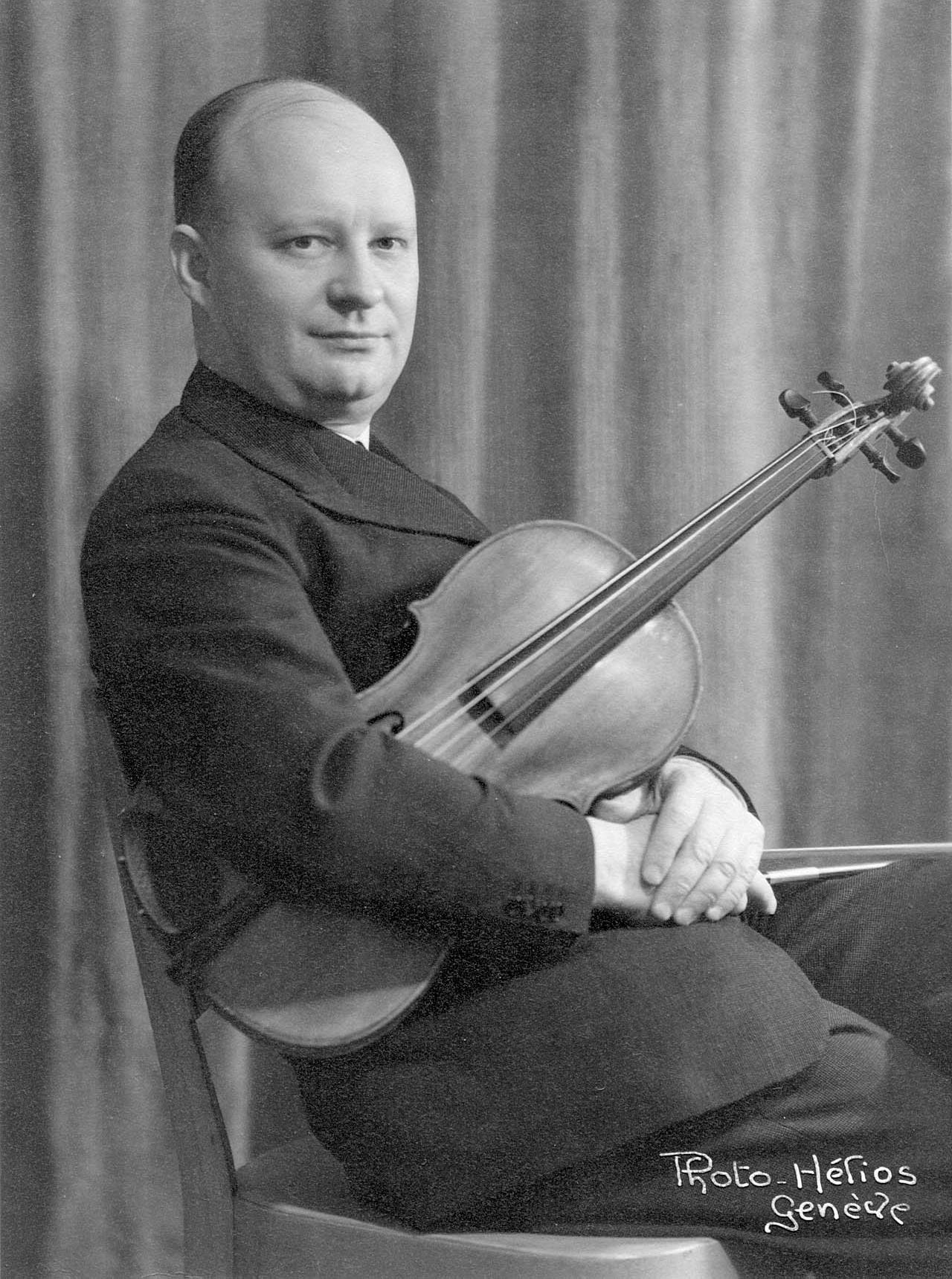
Paul Hindemith was a multi-faceted musician. He began his professional life as a violinist, then acquired an international reputation as a viola player before teaching himself to play virtually every instrument of the orchestra. (There’s a well-known story of a bassoonist arriving late to a rehearsal only to hear the composer playing his part!)
Paul Hindemith (1895–1963)
Der Schwanendreher –Concerto after old folksongs
I. ‘Zwischen Berg und tiefem Tal’
II. ‘Nun laube, Lindelin, laube!’ –‘Der Gutzgauch auf dem Zaune saß’
III. Variations on ‘Seid ihr nicht der Schwanendreher?’
Fiona Sargeant viola
Paul Hindemith, modernist composer and superb violist, wrote Der Schwanendreher in 1935 to augment his own repertoire and gave the first performance that year with the Concertgebouw Orchestra. Its title, ‘The Swan-Turner’, comes from mediæval German slang for a hurdy-gurdy player, who operated his instrument by cranking a handle shaped like a swan’s neck. Thoughts of these itinerant musicians conjured for Hindemith this enticing picture:
A minstrel comes into merry company and shows what he has brought from afar: serious and happy songs, and finally a dance tune.
To lend his vision authenticity, Hindemith wove his concerto around four old German songs such as a minstrel might have played on request. In some ways, Der Schwanendreher is a classical version of ‘Hey, Mr Tambourine Man, play a song for me’, except in this case the lyric would be, ‘Hey, Mr Swan-turner, turn the swan for me’.
After an arresting call to attention from the soloist, we hear our first song, ‘Between Mountain and Deep Valley’, played by trombone and horns. It is the sad song of a solitary walker, soon contrasted against a dogged march theme.
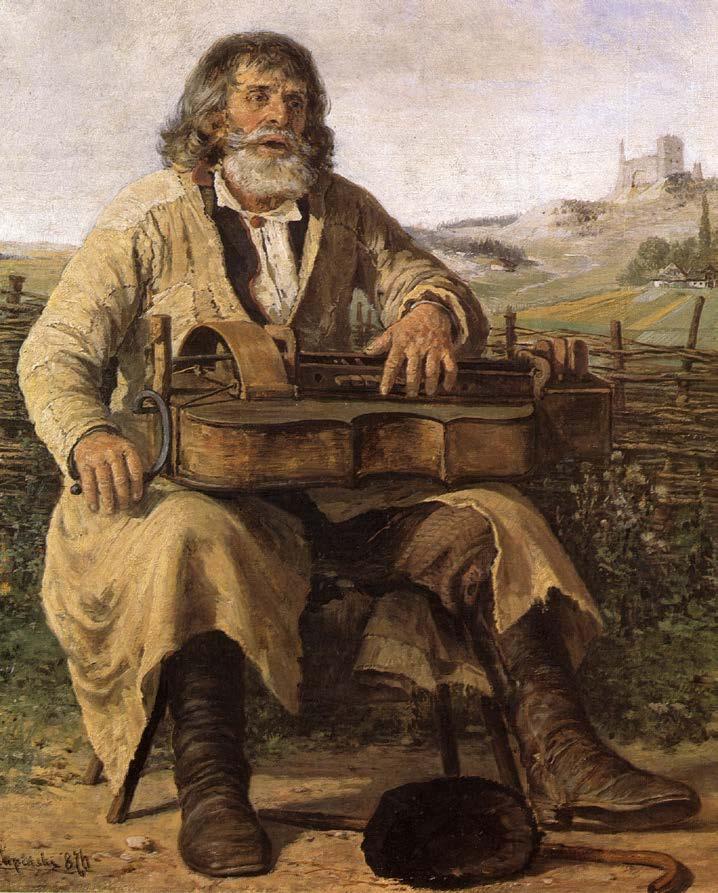
‘Hey, Mr Swan-turner, turn the swan for me.’
The second movement begins with a pensive siciliano for viola and harp, punctuated by hymn-like phrases of the second folk song, ‘Bloom, Little Linden, Bloom!’ The bassoon lightens the mood by triggering a fugato based on the jolly ‘Cuckoo Sat On the Fence’. This builds to a riotous climax in which both songs briefly mingle.
The rip-snorting finale is based on the song ‘Aren’t You the Swan-Turner?’, a question to which the viola triumphantly answers ‘Yes!’ in a series of brilliant variations. Hindemith’s clever scoring for small orchestra minus violins and violas ensures the soloist’s predominance.
The MSO gave the first Australian performance of this rarely programmed concerto in a studio concert broadcast on 9 August 1968 with soloist Paul O’Brien and conductor Patrick Thomas.


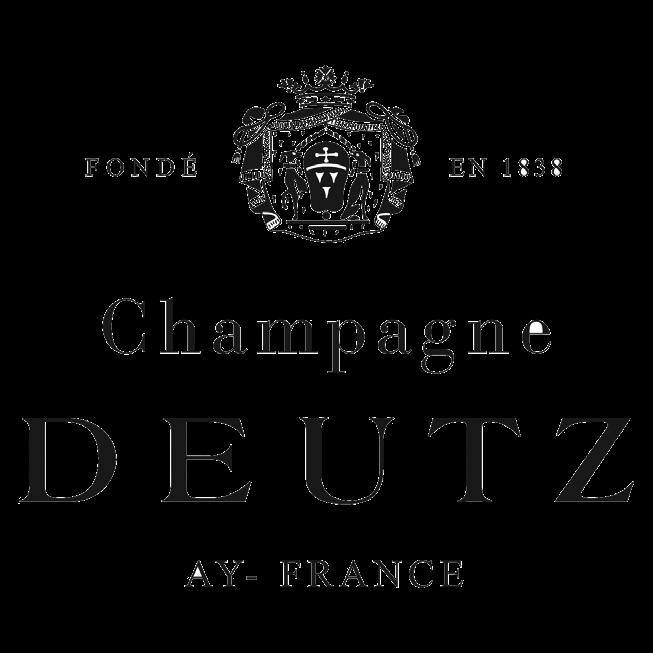
“Downright

Johannes Brahms (1833–1897)
I. Allegro moderato
II. Scherzo (Vivace) – Trio
III. Adagio non troppo
IV. Quasi Menuetto – Trio
V. Rondo (Allegro)
At the age of 20, Brahms introduced himself to Robert Schumann and his wife Clara. Schumann, that most perspicacious of 19th-century talent scouts, immediately hailed the young man’s genius, declaring in an article for the Neue Zeitschrift für Musik that he had found a successor to Beethoven. Such attention, while flattering for the young Brahms, also proved overwhelming, and it was not until he was in his 40s that he dared attempt a symphony. (‘Writing a symphony is no laughing matter,’ he explained.)
The Serenade No. 2 in A major, and its companion piece, the Serenade No. 1 in D major, are Brahms’s first published forays into symphonic writing. Composed between 1857 and 1859, they unfold along neo-classical dimensions, as suites for chamber orchestra. While they clearly reveal Brahms’s mastery, these serenades were also works of initiation, in which he came to grips with the orchestra.
Brahms made this task even more difficult in the Second Serenade through his choice of instrumentation: woodwinds, two horns and strings without violins. This combination lends the work the colouring and autumnal hues we expect from Brahms. The Serenade has a cosmopolitan flavour, and reveals Brahms’s familiarity with a number of national idioms. The outer movements contain distinctly Hungarian moments, while the Scherzo has a Czech flavour and a minuet unfolds as a Viennese waltz. It is the central Adagio non troppo, however, that best

reveals Brahms’s genius and his visionary approach to harmony.
The Serenade was premiered in Hamburg in 1860, and revised by the notoriously self-critical Brahms 15 years later.
Anna Goldsworthy © 2004
The most distinctive, and unusual, feature of Brahms’s second serenade is the absence of violins. Giving the violas the top line in the strings creates a warmer, mellow palette but it also places the wind instruments in high relief, especially when, as in the first movement, they are heard over plucked strings.
As the serenade begins, listen for the use of the clarinets in their lower register, with the bassoons adding richness to the sound. By contrast, Brahms’s use of cooler, brighter combinations of oboe and flute gives a neoclassical flavour, suggesting the wind serenades of Mozart that he would have heard during while working at the prince’s court in Detmold.


TarraWarra Estate provides you with the perfect backdrop for a day of wine tasting, lunch or simply taking in the views from the deck.
Only an hour from Melbourne and you’ll find yourself enjoying our cool climate Chardonnay and Pinot Noir in our subterranean cellar door.
311 Healesville - Yarra Glen Road, Yarra Glen, VIC 3775 Australia +61 3 5962 3311
www.tarrawarra.com.au enq@tarrawarra.com.au
Artists
Thursday 20 November at 7:30pm
Saturday 22 November at 7:30pm
Hamer Hall, Arts Centre Melbourne
Melbourne Symphony Orchestra
Jaime Martín conductor
Joyce DiDonato mezzo-soprano
Rossini William Tell: Overture [12’]
Berlioz Les Nuits d’été (Summer Nights) [32’]
Interval [20’]
Respighi Fountains of Rome [17’]
Respighi Pines of Rome [26’]
CONCERT EVENTS
Pre-concert talk: Learn more about the music with MSO Head of Learning & Engagement Nicholas Bochner and mezzo-soprano Karen Van Spall at 6:45pm in the Stalls Foyer (Level 2) at Hamer Hall
Running time: 2 hours and 10 minutes including interval. Timings listed are approximate.
The MSO Gala series is proudly presented by MSO Premier Partner, Ryman Healthcare.

Chief Conductor and Artistic Advisor of the Melbourne Symphony Orchestra since 2022, and Music Director of the Los Angeles Chamber Orchestra since 2019, with those roles currently extended until 2028 and 2027 respectively, Spanish conductor Jaime Martín also took up the role of Principal Guest Conductor of the BBC National Orchestra of Wales last year, and has held past positions as Chief Conductor of the National Symphony Orchestra of Ireland (2019–2024), Principal Guest Conductor of the Orquesta y Coro Nacionales de España (Spanish National Orchestra) (2022–2024) and Artistic Director and Principal Conductor of Gävle Symphony Orchestra (2013–2022).
Having spent many years as a highly regarded flautist, Jaime turned to conducting full time in 2013. Recent and future engagements include appearances with the London Symphony Orchestra, Dresden Philharmonic, Netherlands Philharmonic Orchestra, Royal Stockholm Philharmonic Orchestra, as well as a nine-city European tour with the London Philharmonic Orchestra.
Jaime Martín is a Fellow of the Royal College of Music in London, and in 2022 the jury of Spain’s Premios Nacionales de Música awarded him their annual prize for his contribution to classical music.
Jaime Martín’s Chief Conductor Chair is supported by the Besen Family Foundation.
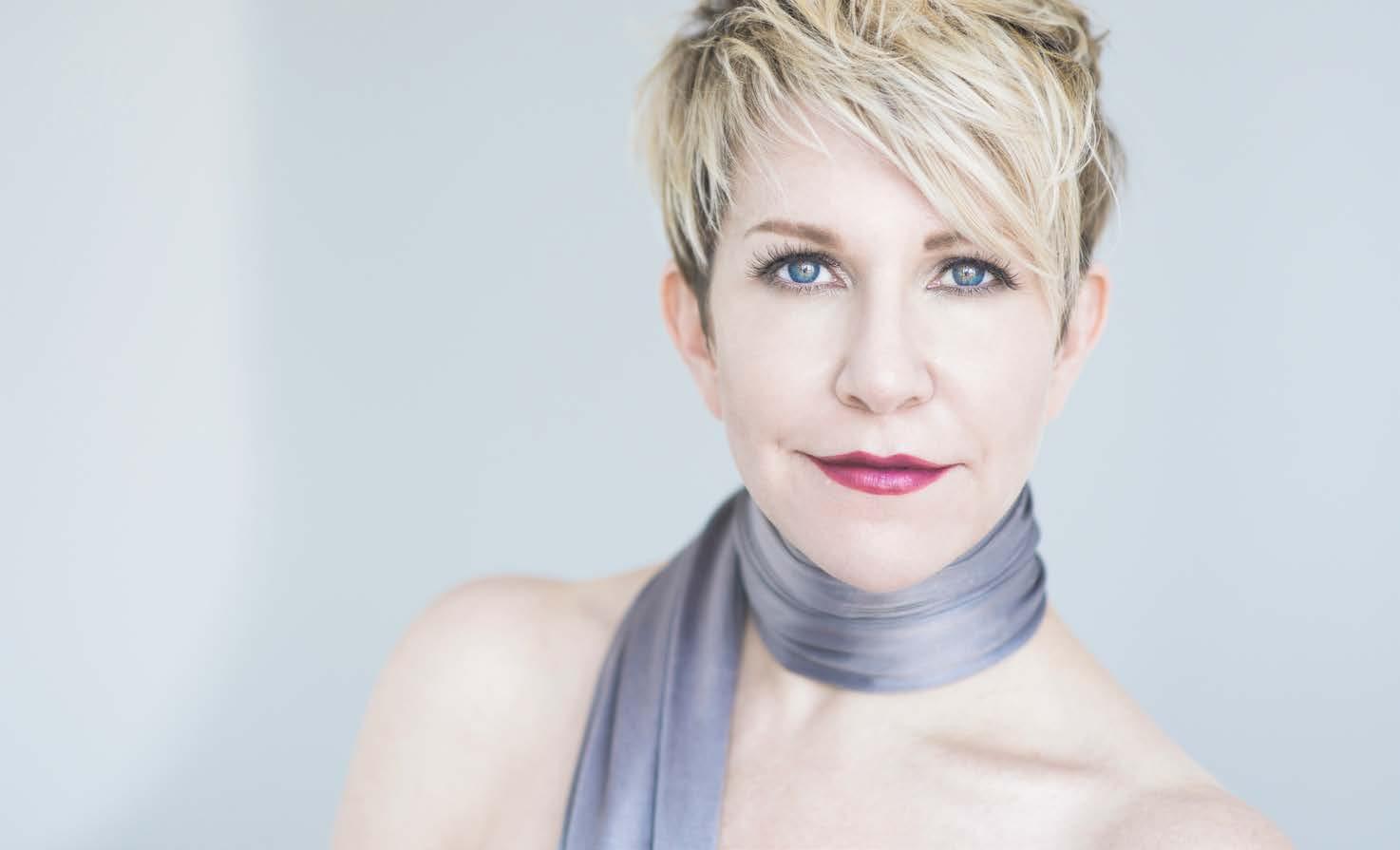
A winner of multiple Grammy awards and an Olivier Award, Joyce DiDonato entrances audiences across the globe – acclaimed as a performer and producer, and a fierce advocate for the arts. With a concert and stage repertoire spanning four centuries, a much-praised discography, and industry-leading projects, she has defined what it is to be a singer in the 21st century.
These concerts are part of her first major Australasian tour, performing with the Tasmanian and New Zealand symphony orchestras as well as the MSO.
Recent highlights include season opening galas for the Minnesota Orchestra, Montreal’s Orchestre Métropolitain and the St Louis Symphony Orchestra, and the Bregenz Festival, where she premiered Emily – No Prisoner Be, a song cycle by Kevin Puts on poetry of Emily Dickinson. She returned to Teatro Real Madrid for Handel’s Theodora and a European recital tour, and made appearances with the London Philharmonic and Norwegian National Opera orchestras. After a ground-breaking three years, she also completed her global touring project EDEN, reaching more than 15 million people.
In 2025–26, she returns to Musikkollegium Winterthur for Another Eve, collaborates with Radio France for Mahler’s Rückert Lieder, and reunites with pianist Craig Terry for recitals in Geneva and Tokyo. She also makes her Lincoln Center stage debut as the Mother in Amahl and the Night Visitors, and a role debut in Saariaho’s Innocence (Metropolitan Opera). Concert appearances include Mahler with Yannick Nézet-Séguin: Symphony No. 2 (Philadelphia Orchestra) and Symphony No. 3 (Berlin Philharmonic). She will tour her album Songplay throughout Asia and will join the Metropolitan Opera Orchestra on a European tour following a performance of Mahler’s Fourth Symphony at Carnegie Hall.
Gioachino Rossini (1792–1868)
This concert begins with one of the most recognisable works in classical music. Part of it, that is. Some years ago, an Australian newspaper described it as a ‘medley of classical tunes, ending with the William Tell Overture’ – the reviewer had recognised only the famous ending.
Unlike some other Rossini overtures, which really are medleys, the William Tell overture doesn’t contain any themes from the opera. And it was atypical in other ways; it lacks, for example, the famous ‘Rossini crescendo’ heard at the end of overtures such as The Barber of Seville. This overture is more sophisticated, effectively a symphonic poem.
It begins with an evocation of what Hector Berlioz called ‘the solemn silence of nature’, adopting the unique effect of five solo cellos, each with their own part to pay, to depict sunrise over the Swiss alps. There are nods to Beethoven’s Pastoral Symphony: thunderous drum rolls for a sudden storm, and an alphorn melody or ranz des vaches (literally a procession of cows), for which Rossini gives the cor anglais an authentic Swiss tune. Finally, after a trumpet ‘call to revolt’, there is the thrilling gallop.
This part of the overture has taken on a life of its own. As early as the 1920s, it was a staple of silent film pianists. Even today, most listeners will think ‘Hi-Yo, Silver!’ before they think of 14th-century Swiss freedom fighters. As the quip goes: An
intellectual is someone who can listen to the William Tell overture without thinking of The Lone Ranger.
Rossini would have understood that level of celebrity very well. When he arrived in Paris in 1823, he was the most famous composer of the day, more famous even than Beethoven. He’d conquered the world – faster, claimed novelist Stendhal, than Napoleon. As a composer for the theatre, Rossini clearly knew the winning formula, not unlike the composers of hit musicals today.
The following year he composed a new opera, Il viaggio a Reims, and adapted others for performance in French. This new phase of his glittering career culminated in the premiere of Guillaume Tell (to use its French title) in 1829.
But to everyone’s surprise – just 37 years old and with 38 operas to his name –Rossini suddenly retired from operatic composition. He lived in retirement, mostly in Paris, writing almost nothing for over 20 years; his new fame was for wit, love of good food and his Saturday soirées. This was not because William Tell had failed –on the contrary. Neither ill-health and depression nor the changes in operatic fashion he deplored can wholly account for Rossini’s retirement – it was a mystery then, and remains one today. The most interesting theory is Robert Donington’s attributing to Rossini ‘some strange inability to tolerate great success’ –prompting the thought that Rossini could afford to retire, in more ways than one.
Adapted from notes by Yvonne Frindle and David Garrett © 2025
The story of William Tell, based on a play by Schiller, comes from the fight of the Swiss cantons for liberation from oppression in the 14th century. William Tell was the famous cross-bow marksman who, after being forced by the despotic bailiff Gessler to shoot an apple placed on his son’s head, killed the tyrant.
Hector Berlioz (1803–1869)
Les Nuits d’été (Summer Nights)
Villanelle
Le Spectre de la rose (The Spirit of the Rose)
Sur les Lagunes (On the Lagoons)
Absence
Au Cimetière (The Cemetery)
L’Île inconnue (The Unknown Isle)
Joyce DiDonato mezzo-soprano
Les Nuits d’été is based on poems by Berlioz’s close friend and neighbour in Paris, Théophile Gautier. Performed as a cycle, the songs suggest an emotional arc, in which, according to commentator John Mangum, ‘the longed-for “always” of the first song, Villanelle, becomes unattainable in the last one, L’Île inconnue’. Villanelle is the only song to carry a date –23 March 1840 – though Absence and Le Spectre de la rose were meant to be part of a concert (which didn’t take place) in November 1840. All six songs were published for high voice and piano during the summer of 1841. Absence was orchestrated in 1843 for concerts in Germany and Le Spectre de la rose was orchestrated for a concert in Gotha in February 1856, attended by a Swiss music publisher who asked Berlioz, through composer Peter Cornelius, to orchestrate the remainder – which he did by the end of that year.
Why did Berlioz write these songs? Often this most literary of composers provided reams of background information. But there are few clues about Les Nuits d’été. Mangum sees significance in the fact that this was the period in which Berlioz’s marriage to the actress Harriet Smithson began to sour. Program notes on Berlioz’s most famous work, the Symphonie fantastique of 1830, always tell of how Berlioz fell in love with Smithson after seeing her as Ophelia in a touring English company’s production of Hamlet, and how
he pursued and married her (in 1833). But it was probably always a case of reality chasing an idealised image. By 1840 their marriage was doomed. By the same token, Absence, the first of the songs Berlioz orchestrated, was a favourite of his mistress and later wife, Marie Recio, and she sang it on that concert tour in Germany in 1843.
Rather than being about ‘summer nights’, Villanelle is set in springtime and looks forward to never-ending love. ‘Fleetfooted’ might well describe the progress of its vocal line over unexpected modulations. The orchestration is light – a simple accompaniment of repeated woodwind chords with occasional string underlining of melody and some imitation of birdsong.
In Le Spectre de la rose, a rose consoles itself with the thought that in being plucked to be worn by a beautiful woman at the previous night’s ball, its death is to be envied. (Gautier’s poem is perhaps best known as the inspiration for a Diaghilev ballet, danced to Berlioz’s orchestration of Carl Maria von Weber’s Invitation to the Dance.) Here, Berlioz sets Gautier’s original poem in a slow waltz time that suggests languid reminiscence of the previous night’s dancing.
In Sur les Lagunes a fisherman mourns the fact that he must continue to travel the sea alone, left bereft by the angel who took his beloved but ‘would not take me’. In Berlioz’s hands there is anguish, darkly coloured, but the singer stops short of operatic outpouring of grief.
Absence is strikingly restrained. The complete reprise (twice) of the solemn first verse gives the song a marked formality.
There is evidence that Berlioz really wrestled with the setting of Au Cimetière, which seeks to convey a complex linkage
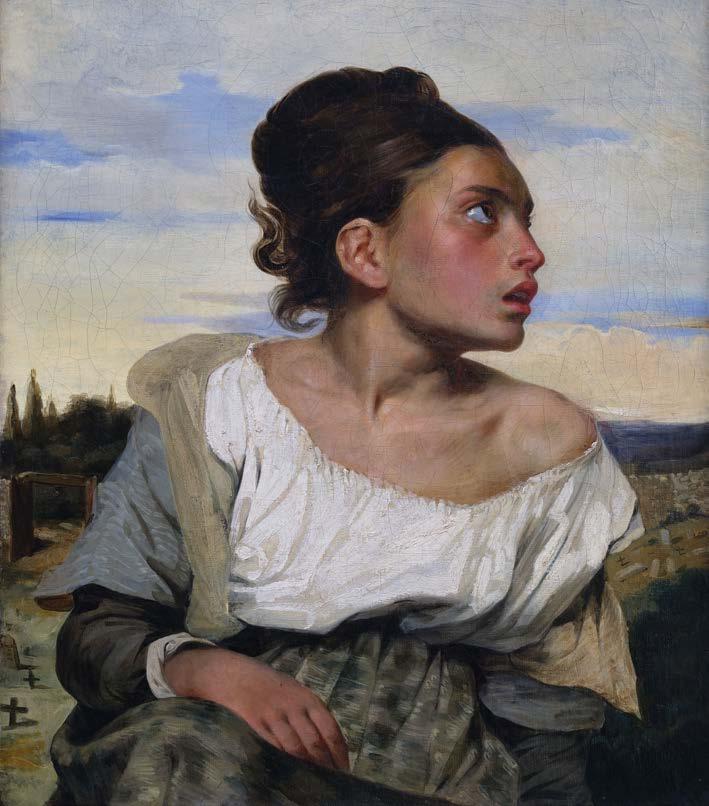
Undoubtedly the most popular and, arguably, successful Italian composer of his generation, Respighi was responsible for the rebirth of Italian instrumental music in the 20th century. He and his composer peers explored a range of ideas in a bid to create a uniquely Italian, especially non-operatic, music in the wake of the social upheavals of Unification.
of images: graves, shadows, yew trees, doves, melodies, fragrances, angels, ghosts… The orchestration of this song may be the lightest of the set but the violin and viola harmonics suggesting a ghostly presence at the end of verse four reveal the perennial resourcefulness of Berlioz’s imagination.
Berlioz chose a spirited Allegro for the final song. The young man wants to be off – ‘the breeze is up’. His fair one wants him to take her to a shore where love is forever. Of course, the title of the song is ‘The Unknown Isle’.
In his day, Berlioz was often criticised for writing oversized music. ‘The orchestra that Beethoven used is not enough for him,’ said critic Paul Scudo. It’s a criticism you hear even now, but the nuanced chamber-music subtlety of Les Nuits d’été provides a corrective to any impression that Berlioz’s music is always pure bombast and grandiosity.
Gordon Kalton Williams © 2013
These ideas, evident to varying degrees in all of Respighi’s music, come together in his so-called ‘Roman trilogy’: the revival of early Italian music; an interest in the ancient modes and Gregorian chant of the early church; openness to the latest musical developments abroad (Debussy, Richard Strauss and Stravinsky, in particular); the exploration of folk and popular music; and a fascination with the glories of ancient Rome.
Respighi moved to Rome from his native Bologna in 1913 to take up the post of compositions professor at the Accademia Nazzionale di Santa Cecilia. The sheer scale of the Eternal City overwhelmed him and, although he had plenty of friends and activities to keep him occupied, Respighi struggled to settle in, enduring severe bouts of melancholy for several years.
According to his wife and biographer (and former student) Elsa Olivieri Sangiacomo, Respighi composed Fountains of Rome:
solely to satisfy a spiritual need; it can be called the synthesis of the feelings, thoughts and sensations perceived by the Maestro in his first few months of life in Rome.
His fascination with the landscapes and life of the city he adored ultimately resulted in three of his best-known pieces: Fountains of Rome (completed in 1916), Pines of Rome (1924) and Roman Festivals (1928).
Despite their obviously Italian topics, these often hedonistic orchestral pieces bear the direct influence of Nikolai Rimsky-Korsakov, with whom Respighi had studied in Russia. From RimskyKorsakov, he developed a thorough knowledge of orchestration techniques, which was coupled with his own innate ability to present strikingly visual imagery through musical forms.
A point usually missed, however, is that in most cases the titles and descriptive programs of Respighi’s symphonic works were written after the music had been composed. Claudio Guastalla, the librettist of a number of Respighi’s operas, wrote in his memoirs: ‘I did not know Respighi when he composed the Fountains of Rome, but I wrote the “programs” to the Pines and Festivals and I assure you that I wrote them after the Maestro had composed the score and not before.’ Respighi does not intend his music to be descriptive of things material or immaterial. Rather, he seeks to convey the impression of a series of sensations, or, as Guastalla called it, ‘transfigured truth converted into sound’.
The Fountain of Valle Giulia at Dawn –
The Triton Fountain in the Morning –
The Fountain of Trevi at Midday –
The Villa Medici Fountain at Sunset
Respighi himself sanctioned the following program for his Fountains of Rome, which was published with the score:
In this symphonic poem the composer has endeavoured to give impression to the sentiments and visions suggested to him by four of Rome’s fountains, contemplated at the hour in which their character is most in harmony with the surrounding landscape, or in which their beauty appears most impressive to the observer.

Respighi’s autograph with the oboe theme from The Fountain of Valle Giulia at Dawn
The first part, inspired by the Fountain of Valle Giulia, depicts a pastoral landscape: droves of cattle pass and disappear in the fresh damp mists of a Roman dawn.
A sudden loud and insistent blast of horns above the trills of the whole orchestra introduces the second part, The Triton Fountain in the Morning. It is like a joyous call, summoning troops of naiads and tritons who come running up, pursuing each other and mingling in a frenzied dance between the jets of water.
Next there appears a solemn theme, borne on the undulations of the orchestra. It is the Fountain of Trevi at Midday. The solemn theme, passing from the woodwind to the brass instruments, assumes a triumphal character. Trumpets peal; across the radiant surface of the water there passes Neptune’s chariot, drawn by sea-horses and followed by a train of sirens and tritons. The procession then vanishes, while faint trumpet blasts resound in the distance.
The fourth part, The Villa Medici Fountain at Sunset, is announced by a sad theme which rises above a subdued warbling. It is the nostalgic hour of sunset…

Pines of the Villa Borghese –Pines near a Catacomb –Pines of the Janiculum –Pines of the Appian Way
The success of Fountains of Rome put Respighi’s career on the map in Italy and abroad, as well as marking a new chapter in the composer’s life and a newfound happiness in his adopted hometown. It became the template for Pines of Rome (1924), for which he had long been collecting sketches and themes. After the work was completed, his librettist, Claudio Guastalla, wrote the ‘captions’ (as Respighi described them) that appear at the front of the score of Pines of Rome:
I. The pine trees of the Villa Borghese Children are at play in the pine groves of Villa Borghese [the traditional children’s song Madama Doré]; they dance round in circles, they play at soldiers, marching and fighting, they are wrought up by their own cries like swallows at evening, they come and go in swarms. Suddenly the scene changes, and…
II. Pine trees near a catacomb We see the shade of the pine trees fringing the entrance to a catacomb. From the depth there rises the sound of mournful psalm-singing, floating through
The Golden City: Rome from the Janiculum (1873) by Samuel Palmer shows the distinctive umbrella shape of the Italian stone pine
the air like a solemn hymn [the Advent plainchant ‘Veni, veni, Emmanuel’], and gradually and mysteriously dispersing.
III. The pine trees of the Janiculum
A quiver runs through the air: the pine trees of the Janiculum stand distinctly outlined in the clear light of a full moon. A nightingale is singing. [Respighi requested a gramophone recording of a real bird for the nightingale, making this the first instance of a pre-recorded sound forming part of a musical score.]
IV. The pine trees of the Appian Way Misty dawn on the Appian Way: solitary pine trees guarding the magic landscape; the muffled, ceaseless rhythm of unending footsteps. The poet had a fantastic vision of bygone glories: trumpets sound and, in the brilliance of the newly risen sun, a consular army bursts forth towards the Sacred Way, mounting in triumph to the Capitol.
For the resplendent brass writing of the Appian Way, Respighi introduces six extra brass parts (sometimes played, as in this concert, by trumpets, bass trumpets and trombones). He calls these ‘buccine’ in reference to the martial brass instruments of ancient Rome.
Adapted from notes by Vincent Ciccarello © 2012
Artists
Friday 21 November at 11:00am
Hamer Hall, Arts Centre Melbourne
Melbourne Symphony Orchestra
Jaime Martín conductor
Program
Rossini William Tell: Overture [12’]
Respighi Fountains of Rome [17’]
Respighi Pines of Rome [26’]
The artist biography and program notes for this performance can be found on pages 18, 20 and 22.
CONCERT EVENTS
Pre-concert talk: Learn more about the music with MSO Cybec Assistant Conductor Leonard Weiss at 10:15am in the Stalls Foyer (Level 2) at Hamer Hall
Running time: 1 hour and 5 minutes without interval. Timings listed are approximate.
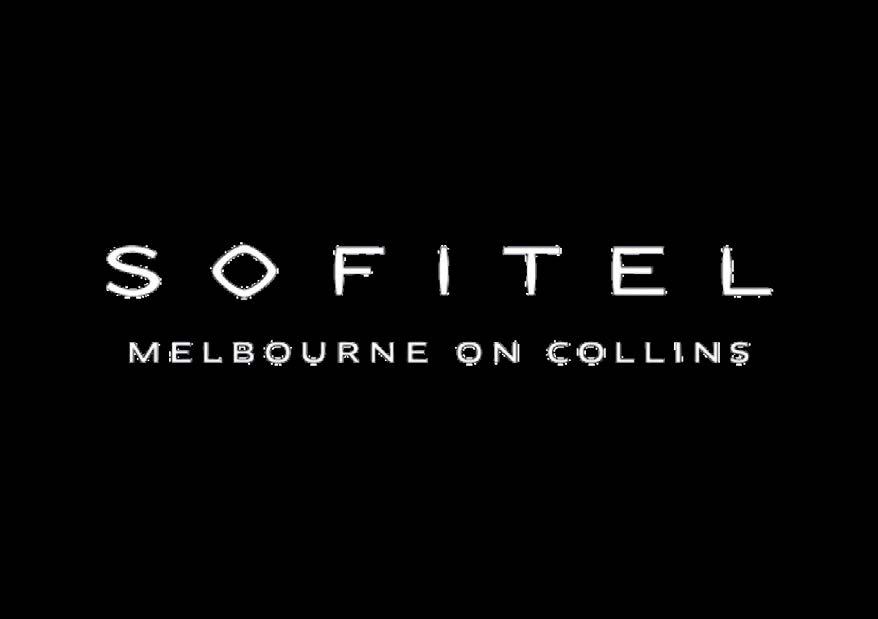

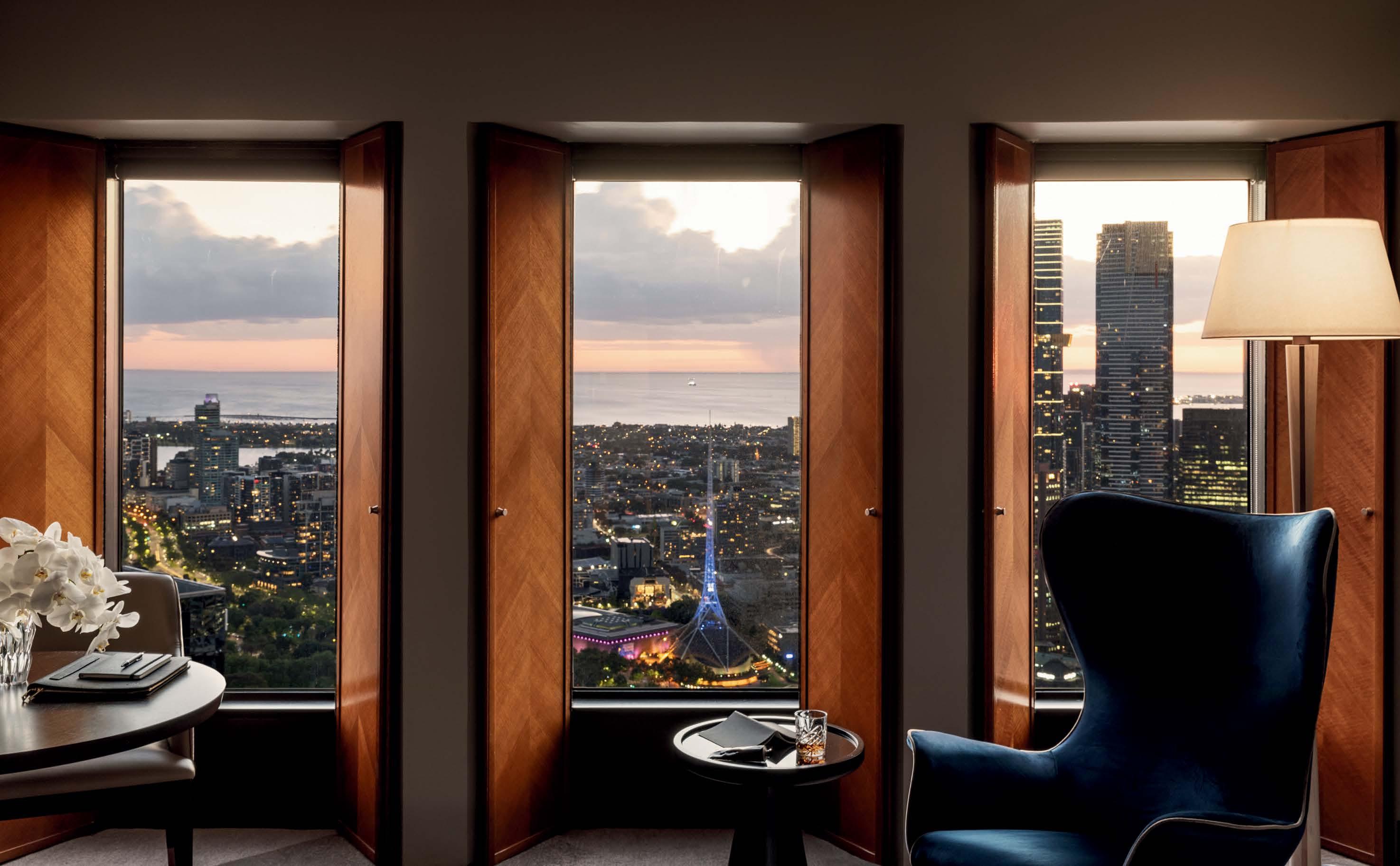

Artists
Thursday 27 November at 7:30pm
Saturday 29 November at 2:00pm Hamer Hall, Arts Centre Melbourne
Friday 28 November at 7:30pm Costa Hall, Geelong
Melbourne Symphony Orchestra
Jaime Martín conductor
William Barton yidaki
Program
Price Concert Overture No. 2 [15’]
Cheetham Fraillon* Treaty** [16’]
Interval [20’]
Dvořák Symphony No. 9, From the New World [40’]
* MSO First Nations Creative Chair
** Australian premiere of an MSO commission
CONCERT EVENTS
Pre-concert talk: Learn more about the music with composers Aaron Wyatt and Deborah Cheetham Fraillon 6:45pm (27 Nov) and 1:15pm (29 Nov) in the Stalls Foyer (Level 2) at Hamer Hall 6:45pm (28 Nov) at Costa Hall
Running time: 1 hour 50 minutes, including interval. Timings listed are approximate.
MSO’s Geelong performance is supported by AWM Electrical, Freemasons Foundation Victoria, the Robert Salzer Foundation, Estate of the late Blanch Brooke Hutchings, and Perpetual Foundation – Alan (AGL) Shaw Endowment

Chief Conductor and Artistic Advisor of the Melbourne Symphony Orchestra since 2022, and Music Director of the Los Angeles Chamber Orchestra since 2019, with those roles currently extended until 2028 and 2027 respectively, Spanish conductor Jaime Martín also took up the role of Principal Guest Conductor of the BBC National Orchestra of Wales last year, and has held past positions as Chief Conductor of the National Symphony Orchestra of Ireland (2019–2024), Principal Guest Conductor of the Orquesta y Coro Nacionales de España (Spanish National Orchestra) (2022–2024) and Artistic Director and Principal Conductor of Gävle Symphony Orchestra (2013–2022).
Having spent many years as a highly regarded flautist, Jaime turned to conducting full time in 2013. Recent and future engagements include appearances with the London Symphony Orchestra, Dresden Philharmonic, Netherlands Philharmonic Orchestra, Royal Stockholm Philharmonic Orchestra, as well as a nine-city European tour with the London Philharmonic Orchestra.
Jaime Martín is a Fellow of the Royal College of Music in London, and in 2022 the jury of Spain’s Premios Nacionales de Música awarded him their annual prize for his contribution to classical music.
Jaime Martín’s Chief Conductor Chair is supported by the Besen Family Foundation.



William Barton is Australia’s leading yidaki (didgeridoo) player as well as a highly esteemed composer, instrumentalist and vocalist. He learnt the instrument from his uncle, Arthur Peterson, an elder of the Wannyi, Lardil and Kalkadunga people, and worked from an early age with traditional dance groups and fusion–rock jazz bands, orchestras, string quartets and mixed ensembles. Throughout his diverse career, he has forged a path in the classical musical world, from the London, Berlin and Bremer philharmonic orchestras to historic events at Westminster Abbey (Commonwealth Day 2019), Anzac Cove in Gallipoli and the Beijing Olympics. He has released five albums on the ABC Classic label, including Heartland (2022) with violinist Véronique Serret and the words of his mother, Aunty Delmae Barton. He has been developing a new musical language, which is epitomised in this recording.
In 2023 he was named Queensland Australian of the Year, received the Richard Gill Award for Distinguished Services to Australian Music, and was an Australian of the Year nominee. In 2022 he was recognised for his work with the Australian Chamber Orchestra on the soundtrack from the film River, which won Best Soundtrack Album and Best Original Song Composed for the Screen (APRA–AMCOS Screen Awards), Best Original Score in a Documentary (AACTA Awards) and Best Original Soundtrack (ARIA Awards). Other awards include the Australia Council’s Don Banks Music Award (2021), Best Original Score for a Mainstage Production (2018 Sydney Theatre Awards) and Best Classical Album (ARIA) for Birdsong at Dusk in 2012. William Barton holds honorary doctorates from Griffith University and the University of Sydney.

Florence Price (1888–1953)
Like many of her American contemporaries, Florence Beatrice Price frequently experimented with the integration of folk music into conventional classical idioms. Several of her surviving symphonies and chamber works, for example, contain a ‘juba’ – an upbeat percussive dance with African and African American origins that was commonly performed among enslaved people. She was also deeply attuned to the spirituals, a sung repertoire arising from slavery with lyrics that often focused on liberatory narratives in scripture. She once wrote: ‘We are waking up to the fact pregnant with possibilities that we already have a folk music in the Negro spirituals.’ Antonín Dvořák had made a similar argument in the 1890s, but his own musical engagement with spirituals was perfunctory at best.
For Price, the compositional ‘possibilities’ in the spirituals were opportunities for intense musical and emotional exploration
of these signal cultural touchstones. By the 1920s, African American vocal soloists and choirs had popularised the repertoire around the world, including in Australia as early as the 1880s. Across Price’s catalogue, we can find works in practically every genre that either quote from wellknown spirituals, creating a symbolic network of associations, or adopt their distinctive melodic and rhythmic vocabulary. Her Concert Overture No. 2 (1943) falls into this first category.
The opening half of the overture presents three miniature scenes in rapid succession. Based on three spirituals in turn – ‘Go Down, Moses’, ‘Nobody Knows the Trouble I’ve Seen’ and ‘Ev’ry Time I Feel the Spirit’ – the musical character of these sections moves from sombre to poignant to ebullient. The more abstract second half combines melodic fragments from the three previous sections into a unified portrait that closes with a return to the profundity of Moses’s cry for liberation found in the first spiritual.
Douglas W. Shadle © 2025
FLORENCE PRICE was a virtuoso pianist, organist and teacher as well as a prolific composer, writing in nearly every genre except opera. After training at Boston’s New England Conservatory, she devoted the first 20 years of her career to music education and the composition of pedagogical works. In 1927, pervasive racist violence drove her family to Chicago, where she found an invigorating cultural environment shaped by the Black Renaissance. It was here that she refined a distinctive musical language honouring her cultural heritage. In 1933 the Chicago Symphony Orchestra premiered her First Symphony, making her the first African American woman to have a work performed by a major US orchestra.
Deborah Cheetham Fraillon (born 1964)
William Barton yidaki
Treaty is the second instalment of Deborah Cheetham Fraillon’s concerto for yidaki, of which the first was Baparripna –Dawn, premiered by William Barton and the MSO in 2022 and reprised in July this year. Treaty received its world premiere in Edinburgh on 22 August during the MSO’s European and UK tour.
The composer writes…
When I first sat down to write this program note it was June 2025. The process of Treaty was underway in Victoria. The long walk for Truth and Justice from Portland to Melbourne undertaken by Travis Lovett and countless others, had just passed through Colac.
Two months later, as MSO prepared to play the premiere of this new work, half a world away, Victoria’s First Peoples’ Assembly ratified an in-principle treaty agreement with the State Government of Victoria, representing an historic step towards the formal treaty.
The synchronicity of this occasion was uppermost in my mind as William Barton took to the stage with the MSO that night. This was the first time in Australia that a state or territory had legislated a treaty process with its Indigenous people. On the other side of the globe, unheralded, we were telling this story to a sold-out audience in Edinburgh’s Usher Hall.
Months passed and even for a people who know what it is to wait, the anticipation was almost too much to bear. Finally, on the evening of Thursday 30 October – just as I prepared to update my program note for the Australian premiere of Treaty – the news we had been longing for came through. The votes had been tallied.
The Statewide Treaty Bill had completed its final test and was passed through both houses of Parliament without amendment. Only Victoria has been able to achieve this critical step towards true self-determination for First Nations people of this land.
As we now give the first Australian performance of the work named in honour of this process, I think of the unique opportunity this presents, and of works which, through the centuries, have held a similar place in history as composers have grasped the shift in the very fabric of society and transformed that into a musical score. You will have your favourite works telling of such moments and achievements that resonate throughout history. The passing of the Statewide Treaty Bill is one such moment for us, right now.
While I do not claim to place this work alongside such giants as Beethoven, Verdi and Shostakovich, this moment in our nation’s history and the timing of the Australian premiere is one I hope will bring the MSO into focus and relevance for the people of Victoria in a unique and powerful way.
Together we are standing in history as this work is played and this speaks to the reason why I create music. To speak truth. To honour my ancestors and their lived experience and to strengthen the journey from knowing to understanding.
Treaty captures the journey from final moments of self-determination and sovereignty to the present day.
The arrival of colonisation is heralded by the ominous majesty of the French horns. They represent not only the invaders but equally the leadership of The People (First Nations people) as they stare down the threat of invasion. Even in the face of cannon fire we can sense their nobility –not as simplistic savages, as Jean-Jacques

PROF. DEBORAH CHEETHAM FRAILLON AO
(Yorta Yorta/Yuin) has long championed the voice and visibility of classically trained Aboriginal and Torres Strait Island musicians through her achievements as a composer, performer and artistic director. Her landmark compositions include Australia’s first Indigenous opera Pecan Summer (2010), Eumeralla, a war requiem for peace (2018), Parrwang Lifts the Sky (2020) and Woven Song (2018–2025). Her major commissions include works for the Melbourne, Sydney, Adelaide and Hawaiʻi symphony orchestras; the Flinders, Goldner, Australian and WASO string quartets; Chineke! Orchestra (UK); Rubiks Collective; Melbourne Ensemble; Plexus Collective; Sydney Philharmonia Choirs; Victorian Opera; the Australian Ballet; the MPavilion Project and the ABC. In 2021 she began a five-year appointment as MSO First Nations Creative Chair and in 2023 was appointed the inaugural Elizabeth Todd Chair of Vocal Studies at the Sydney Conservatorium of Music.
Rousseau would have us think, but as the warriors, scientists, musicians, philosophers, farmers, healers, dancers, story tellers, architects, musicians and astronomers of the longest continuing culture in the world.
Why use a Western instrument to speak to this? Many First Nations leaders were quick to learn the language of the invaders, hoping to be able to better negotiate with them. This shared horn theme then becomes a kind of dialogue of determined will for both the invaders and those facing invasion. The bass drum, however, speaks only one language –destruction and decimation.
The yidaki’s sound of wind through the sheoak provides a moment of respite. On the east coast of Australia, the sheoak [casuarina] provides a protected space for babies to sleep in their tarnuk or cradle. The pine needles which cover the ground at the base of the tree are a natural repellent to insects and other creatures which would otherwise harm the babies.
The yidaki falls silent as the Aboriginal people, startled by the brutality of the conflict, mourn their losses. The cellos and violas lament in the aftermath: loss, regrouping and mourning.
A yidaki bird call (kookaburra) rings out, reasserting nature’s presence as the wind blows through an open space and exposed landscape.
The sorrow of those who mourn is individualised by the bassoon solo until aggression returns as a shocking interruption of grief, inserting terror. Once again, the machinery of warfare is rolled into place. The attack is unrelenting. The people are scattered, running for their lives, the sound of military drums in pursuit. The yidaki’s wild call sounding the warning of imminent attack becomes an agitated heartbeat and heavy breathing of those who have once again been forced to flee.
Plagued by uncertainty and fear, The People gather, this time in ever diminishing number, to determine their next move. They shelter once again in the shade of the sheoak.
The bodies of the mothers, fathers, daughters and sons, young men and old warriors, painters, singers, healers and dancers lie strewn across the abundant fields of their tribal nations. The smoke lingers as does the sound of distant cannon fire as the progress of colonisation moves on to the next nation and the next.
The yidaki growls as hunger sets in for those who have survived the onslaught. Cut off from hunting lands and water sources, those who were not blown apart by cannons and gunfire succumb to the slow torture of hunger and disease. Heartbroken, the survivors determine to draw on their resilience.
Those with good intentions arrive. Across the continent, at whatever time colonisation arrived, it was quickly
followed by those with good intentions, often religious, offering hope. A new way of life. Missions grew. Relative safety for those who lived there, but the low growl of the yidaki is a warning.
Eventually, echoing historic records during this time, the yidaki is silenced as cultural expression and language were suppressed and eventually replaced with the trappings of Western Christianity. Many of the people adopted these ways as a means of survival. But the good intentions were often corrupted by the hatred and greed of the mission managers, and the people realised that safety was conditional at best and routinely unreliable.
The People find whatever way they can to remain connected to their identity, culture and spirituality, even if expressed through a new language. Leaders emerge and The People begin to look towards a return to self-determination and the reassertion of sovereignty. The yidaki, silent for so long, returns with a high gentle call to the French horn, the return of culture, cautious but undeniable, gentle but strong.
Talk of a Treaty is introduced (falling minor and major thirds of the tonic chord signal ‘Trea-ty’). Surely after having lived within the bounds of the new laws, having fought and died as Australian service men and women in two world wars and other global conflicts; surely after having learned about, practised and accepted the introduced spiritual language and customs, a conversation about sovereign rights could begin?
No, The People must stay in their place. But they rise and rise again in the face of so many defeats.
Inevitably the protest and the movement of The People gains momentum in the face of anger, hostility, denialism, ignorance, fear, racism, deaths in custody, youth suicide, homelessness,
dispossession, all bound together with so much bureaucracy (snare rim-shots like so many keyboard clicks in the ‘Circumlocution Office’*).
Calls for Treaty ring out now as a major and minor seconds.
The Yoorrook Justice Commission –Victoria’s and Australia’s first formal truthtelling inquiry into historic and ongoing systemic injustices perpetrated is formed and declares once and for all the official status of the genocide committed. Yidaki –rhythmic growls with wild calls of defiance rhythmically to the finish demanding Treaty!
The work crescendos to end on a knifeedge. Breathless, we fall on the tonic but what does it actually mean? What will come of it all? What is the next movement of this work?
Deborah
Cheetham Fraillon AO © 2025
Antonín Dvořák (1841–1904)
Symphony No. 9 in E minor, Op. 95, From the New World
I. Adagio – Allegro molto
II. Largo
III. Scherzo (Molto vivace)
IV. Allegro con fuoco
Musical nationalism in the 19th century was based on the idea that each nation has folksongs that are inherently their own, and the job of a composer was to discover, refine and develop these songs into a national classical music. This was especially relevant to Czech composers as a National Revival was drawing cultural distinctions between themselves and their Austrian neighbors after centuries of Habsburg rule.
Americans, too, began to wonder if they should have classical music of their own. In 1885 the New York philanthropist Jeannette Thurber founded the National Conservatory of Music and in 1892 recruited Antonín Dvořák to be its director. She hoped he would help educate local musicians and advance a national style much like he had in his homeland of Bohemia. In the words of H. L. Mencken, he was hired to ‘introduce Americans to their own music’.
*The type of government department, satirised in Charles Dickens’s novel Little Dorrit (1857), in which the establishment is shown as run purely for the benefit of its incompetent and obstructive officials.
The National Conservatory had several Black students, among whom was Harry T. Burleigh, a composer and singer who showed Dvořák a variety of American folk styles. Based on what he heard, Dvořák concluded that American classical music should draw from African American spirituals as well as the indigenous music of American Indians. He wrote: ‘These can be the foundation of a serious and original school of composition, to be developed in the United States. These beautiful and varied themes are the product of the soil. They are the folk songs of America and your composers must turn to them.’
And so he wrote the New World Symphony and American String Quartet as models, loosely integrating elements of African American and Native American musical traditions. The Symphony was premiered by the New York Philharmonic at Carnegie Hall on 16 December 1893, conducted by Anton Seidl, and was immediately met with acclaim. But the
Panic of 1893 (the worst American economic crisis before the Great Depression in the 1930s) left the National Conservatory’s finances – and Dvořák’s expensive salary – in jeopardy. He returned to Bohemia in April 1895, penning a bitter goodbye in Harper’s Magazine lamenting the lack of government support for music in America.

The title page of the autograph score of Dvořák’s Ninth Symphony
Dvořák’s subtitle was an afterthought, written on the score just as his American-born secretary, Josef Kovařík, was about to deliver it to the conductor Anton Seidl. Significantly, he wrote in Czech – ‘Z nového světa’ – rather than the German or English that Seidl or his American audience would have understood. And in doing so, writes Anthony Cane, Dvořák was seen to be addressing the work, like a picture postcard, to his fellow countrymen back in Europe, sending them impressions and greetings ‘from the New World’. At the same time, Dvořák challenged listeners to identify depictions of America or elements of American music.
Kovařík always said the inscription was just ‘the Master’s little joke’, but the ‘joke’ has, ever since, prompted the question: Is the New World an ‘American’ symphony or the work of a homesick Bohemian? Many listeners and musicians have heard it as both. Seidl, for example, wrote: ‘from the very first I have been deeply impressed by the adagio [Largo]. It is so sad. It sounds to me so suggestive of the loneliness of the immense prairie; of the Far West. And it is pathetic with the pathos of homesickness.’ Another conductor, Walter Damrosch, said of the same ‘exquisite’ movement: ‘As to whether it is American or not I cannot say. To me it suggests nothing American. It is Dr Dvořák. His genius has evolved the work and you can see him in every bit of the work.’
There are no wholesale American folk tunes in the New World Symphony – just elements of what Dvořák thought made them distinctive: pentatonic (five-note) scales, drumming patterns and syncopated rhythms. The middle movements were partly inspired by Henry Wadsworth Longfellow’s Song of Hiawatha, a romanticised epic about Native Americans. And Dvořák’s own Czech style still remains throughout the piece, even as he tried to overlay it with American elements.
The first movement begins with a slow and quiet Adagio introduction that paints a hazy scene. Then the faster Allegro molto section introduces a bold call-andresponse pattern, first heard between the horns and woodwinds. A second theme appears with the flute and oboe playing quietly together in a pentatonic scale. The last theme to be introduced is a lyrical flute solo reminiscent of the spiritual ‘Swing Low, Sweet Chariot,’ which Burleigh had taught Dvořák. All these elements are mixed together and recur throughout the movement.
The slow movement, Largo, begins with seven mysterious chords that connect into the now famous cor anglais solo. This, too, sounds like a traditional spiritual or hymn, but was actually composed by Dvořák (in 1922, one of Dvořák’s students added lyrics to it, creating a popular song called ‘Goin’ Home’ – occasionally mistaken as the original source). Much of the movement develops this melody, including a striking passage where it’s accompanied by a pizzicato (plucked) walking bass line. After a contrasting section that brings back the opening theme of the first movement, the cor anglais melody returns and grows warmer, joined by the strings.
The third movement, Vivace, begins with a loud falling pattern that is very similar to the second movement of Beethoven’s Ninth Symphony. The music here is
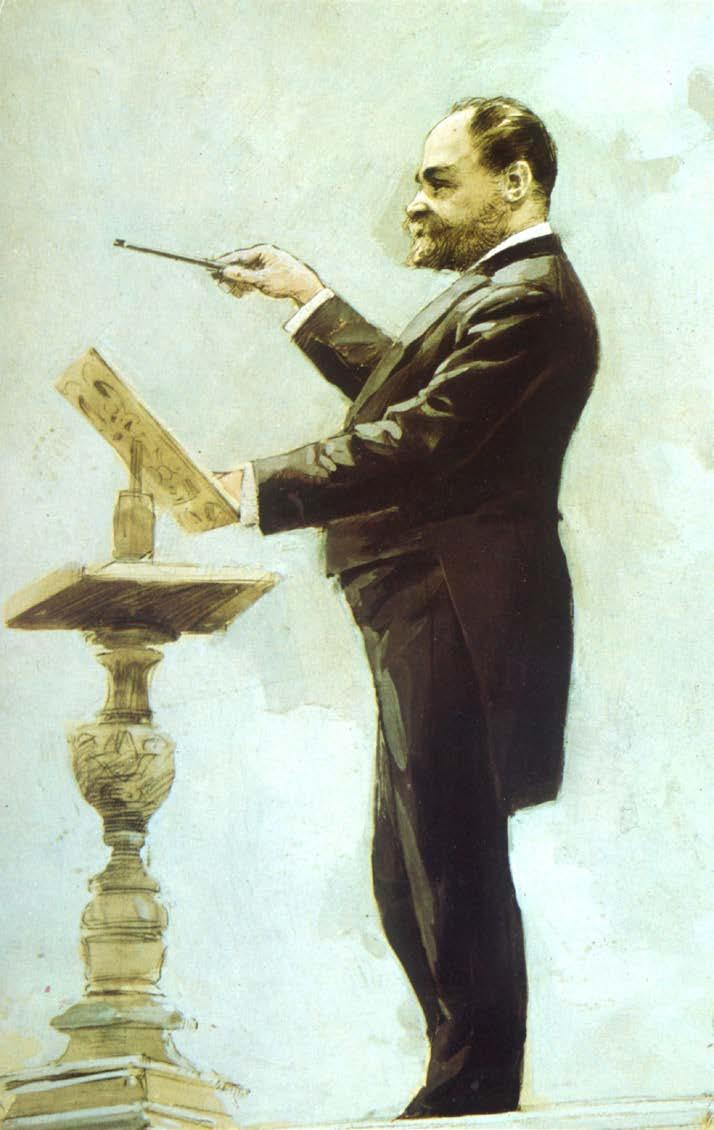
Dvorak conducting in Chicago in 1893
dancelike, inspired by Hiawatha’s wedding feast in the Longfellow poem.
The finale, Allegro con fuoco, opens with a tense rising half-step pattern in the strings, building to a powerful brass fanfare, and then a second theme in the clarinet. The movement brings back earlier melodies –including ‘Goin’ Home’ – before arriving at a coda and a fortissimo E major ending. But in a final touch evoking America’s wide-open landscapes, Dvořák adds an echo that fades into silence.
Benjamin Pesetsky © 2025
MSO Patron
Her Excellency Professor, the Honourable
Margaret Gardner AC, Governor of Victoria
Honorary Appointments
Chair Emeritus
Dr David Li AM
Life Members
John Gandel AC and Pauline Gandel AC
Jean Hadges
Sir Elton John CBE
Lady Primrose Potter AC
Jeanne Pratt AC
Lady Marigold Southey AC
Michael Ullmer AO and Jenny Ullmer
MSO Ambassador
Geoffrey Rush AC
Artist Chair Benefactors
Chief Conductor Chair Jaime Martín
Supported by the Besen Family Foundation
Cybec Assistant Conductor Chair
Leonard Weiss CF
Cybec Foundation
MSO Now & Forever Fund: International Engagement Gandel Foundation
Artist Development Programs –
Cybec Foundation
Cybec Young Composer in Residence
Cybec First Nations Composer in Residence
Cybec 21st Century Australian Composers Program
Community and Public Programs
Australian Government Department of Social Services, AWM Electrical, City of Melbourne, Hansen Little Foundation, Professor Mary-Jane Gething AO
Student Subsidy Program
Anonymous
Jams in Schools
Melbourne Airport, Department of Education, Victoria – through the Strategic Partnerships Program, AWM Electrical, Jean Hadges, Hume City Council, Marian and EH Flack Trust
MSO Regional Touring
AWM Electrical, Freemasons Foundation Victoria, Robert Salzer Foundation, Sir Andrew and Lady Fairley Foundation, Rural City of Wangaratta, Estate of the late Blanch Brooke Hutchings, Perpetual Foundation – Alan (AGL) Shaw Endowment
Sidney Myer Free Concerts
Sidney Myer MSO Trust Fund and the University of Melbourne, City of Melbourne Event Partnerships Program
Instrument Fund
Tim and Lyn Edward, Catherine and Fred Gerardson, Pauline and David Lawton, Joe White Bequest
Platinum Patrons ($100,000+)
AWM Electrical Q
Besen Family Foundation
Prof Mary-Jane Gething AO ♡
The Gross Foundation ♡
Dr David Li AM and Angela Li Q
Lady Primrose Potter AC Anonymous (2)
Virtuoso Patrons ($50,000+)
The Aranday Foundation Q
Mrs Jennifer Brukner OAM Q
Tim and Lyn Edward ♡ ♫
Dr Harry Imber ♡
Margaret Jackson AC ♡
Lady Marigold Southey AC Q
The Yulgilbar Foundation Q
Impresario Patrons ($20,000+)
Christine and Mark Armour
Ren Barlow
Shane Buggle and Rosie Callanan ♡ Q
Debbie Dadon AM Q
Catherine and Fred Gerardson
The Hogan Family Foundation
Pauline and David Lawton ♡
Jaime Martín
Paul Noonan
Elizabeth Proust AO and Brian Lawrence ☼
Sage Foundation ☼
The Sun Foundation
Maestro Patrons ($10,000+)
John and Lorraine Bates ☼
Margaret Billson and the late Ted Billson ♡
John Calvert-Jones AM and Janet Calvert-Jones AO Q
Krystyna Campbell-Pretty AM
Jolene S Coultas Q ♡
The Cuming Bequest
Miss Ann Darby in memory of Leslie J. Darby
Anthony and Marina Darling Q
Andrew Dudgeon AM ♡
Andrew and Theresa Dyer Q ♡
Val Dyke ♡
The Finkel Foundation Q
Kim and Robert Gearon ♡
The Glenholme Foundation Q
Charles & Cornelia Goode Foundation Q
Cecilie Hall and the late Hon Michael Watt KC ♡ ♫
Hanlon Foundation ♡
Michael Heine Q
David Horowicz ♡ Q
Peter T Kempen AM ♡ Q
Owen and Georgia Kerr Q
Suzanne Kirkham
Peter Lovell
Janet Matton AM & Robin Rowe Q
Rosemary and the late Douglas Meagher ♡
The Myer Foundation
Dr Justin O’Day and Sally O’Day Q
Ian and Jeannie Paterson
Quin and Lina Scalzo Q
Glenn Sedgwick ♡ Q
Cathy Simpson and John Simpson AM Q
David Smorgon OAM and Kathie Smorgon Q
Straight Bat Private Equity Q
Athalie Williams and Tim Danielson
Lyn Williams AC Q
The Wingate Group Q Anonymous (2)
Principal Patrons ($5,000+)
Arnold Bloch Leibler Q
Mary Armour
Philip Bacon AO Q
Alexandra Baker
Barbara Bell in memory of Elsa Bell
Julia and Jim Breen
Nigel and Sheena Broughton
Jannie Brown
Chasam Foundation Q
Janet Chauvel and the late Dr Richard Chauvel
John Coppock OAM and Lyn Coppock
David and Kathy Danziger
Mary Davidson and the late Frederick Davidson AM
Carol des Cognets
George and Laila Embelton Q
Equity Trustees ☼
Bill Fleming Q
John and Diana Frew ♡
Carrillo Gantner AC and Ziyin Gantner
♡ Chair Sponsor | Q 2025 Europe Tour Circle | ☼ First Nations Circle ♫ Commissioning Circle | ∞ Future MSO
Geelong Friends of the MSO
The Glavas Family
Louise Gourlay AM Q
Dr Rhyl Wade and Dr Clem Gruen ♡
Louis J Hamon OAM
Dr Keith Higgins and Dr Jane Joshi
Jo Horgan AM & Peter Wetenhall Q
Geoff and Denise Illing
Dr Alastair Jackson AM Q
John Jones
Konfir Kabo
Merv Keehn and Sue Harlow
Mr Ian Kennedy AM & Dr Sandra Hacker AO
Liza Lim AM ♫
Lucas Family Foundation ♡
Morris and Helen Margolis ♡
Samantha Mark
Allan and Evelyn McLaren
Dr Isabel McLean
Gary McPherson ♡
The Mercer Family Foundation
Suzie and Edgar Myer
Rupert Myer AO and Annabel Myer
Anne Neil in memory of Murray A. Neil ♡
Patricia Nilsson ♡
Sophie Oh
Phillip Prendergast Q
Ralph and Ruth Renard
Jan and Keith Richards
Dr Rosemary Ayton and Professor Sam Ricketson AM
Gillian Ruan Q
The Kate and Stephen Shelmerdine Family Foundation Q
Helen Silver AO and Harrison Young
Brian Snape AM
Dr Michael Soon
Gai and David Taylor
P & E Turner
The Upotipotpon Foundation Q
Mary Waldron
Janet Whiting AM and Phil Lukies Q
Kee Wong and Wai Tang Q
Dawna Wright and Peter Riedel ♡
Peter Yunghanns Q
Igor Zambelli
Shirley and Jeffrey Zajac
Anonymous (4)
Associate Patrons ($2,500+)
Barry and Margaret Amond
Carolyn Baker
Marlyn Bancroft and Peter Bancroft OAM
Janet H Bell
Allen and Kathryn Bloom
Drs Alan and Jennifer Breschkin
Stuart Brown
Lynne Burgess
Dr Lynda Campbell
Oliver Carton
Caroline Davies
Leo de Lange
Sandra Dent
Rodney Dux
Diane and Stephen Fisher
Martin Foley Q
Barry Fradkin OAM and Dr Pam Fradkin
Anthony Garvey and Estelle O’Callaghan
Janette Gill
R Goldberg and Family
Goldschlager Family Charitable Foundation
Colin Golvan AM KC and Dr Deborah Golvan
Miss Catherine Gray
Marshall Grosby and Margie Bromilow
Susan and Gary Hearst
Amy and Paul Jasper
Sandy Jenkins
Sue Johnston
Melissa Tonkin & George Kokkinos
Dr Jenny Lewis
David R Lloyd
Andrew Lockwood
Margaret and John Mason OAM
Lisa and Brad Matthews
Dr Paul Nisselle AM
Simon O’Brien
Roger Parker and Ruth Parker
Alan and Dorothy Pattison
Liz and Graham Pratt
James Ring
Tom and Elizabeth Romanowski
Dr Ronald and Elizabeth Rosanove
Christopher Menz and Peter Rose
Meredith Schilling SC
Marshall Segan in memory of Berek Segan OBE AM and Marysia Segan
Steinicke Family
Jenny Tatchell
Christina Turner
Timothy Walker CBE AM
Bob Weis
Anonymous (5)
Player Patrons ($1,000+)
Dr Sally Adams
Don Adamson
Jessica Agoston Cleary ∞
Don Adamson
Helena Anderson
Applebay Pty Ltd
Margaret Astbury
Geoffrey and Vivienne Baker
Mr Robin Batterham
Peter Berry and Amanda Quirk
Rick Berry
William Birch
Richard Bolitho
Boncal Family Foundation
Michael Bowles and Alma Gill
Joyce Bown
Drs John D L Brookes and Lucy V Hanlon
Roger and Coll Buckle
Jill and Christopher Buckley
Ronald Burnstein
Daniel Bushaway and Tess Hamilton
Alexandra Champion de Crespigny ∞
John Chapman and Elisabeth Murphy
Kaye Cleary
Warren and Margaret Collins
Sue Dahn
Mrs Nola Daley
Panch Das and Laurel Young-Das
Michael Davies and Drina Staples
Rick and Sue Deering
John and Anne Duncan
Jane Edmanson OAM
Christopher R Fraser
Miles George
David I Gibbs AM and Susie O’Neill
Sonia Gilderdale
Dr Celia Godfrey
Dr Marged Goode
Fred and Alexandra Grimwade Q
Hilary Hall, in memory of Wilma Collie
David Hardy
Cathy Henry
Gwenda Henry
Anthony and Karen Ho
In Memory of Rosemary Hodgson
Anna Holdsworth
Rod Home
Lorraine Hook
Doug Hooley
Katherine Horwood
Penelope Hughes
Shyama Jayaswal
Basil and Rita Jenkins
Jane Jenkins
Wendy Johnson
Dr Gint Kalpokas and Dr Michael Upson
Angela Kayser
Drs Bruce and Natalie Kellett
Dr Anne Kennedy
Akira Kikkawa ∞
Dr Richard Knafelc and Mr Grevis Beard
Tim Knaggs
Dr Jerry Koliha and Marlene Krelle
Jane Kunstler
Ann Lahore
Wilson Lai and Anita Wong Q
Kerry Landman
Janet and Ross Lapworth
Rex Lau
Bryan Lawrence
Halina Lewenberg Charitable Foundation
Phil Lewis
Elizabeth H Loftus
David Loggia
Chris and Anna Long
Elena Lovu
Wayne McDonald and Kay Schroer
Andrea McCall
Lesley McMullin Foundation
Dr Eric Meadows
Ian Merrylees
Sylvia Miller
Ian Morrey and Geoffrey Minter
Susan Morgan ∞
Anthony and Anna Morton
Dr Judith S Nimmo
George Pappas AO, in memory of Jillian Pappas
Bruce Parncutt AO
Ian Penboss
Peter Priest
Professor Charles Qin OAM and Kate Ritchie
Eli and Lorraine Raskin
Michael Riordan and Geoffrey Bush
Cathy Rogers OAM and Dr Peter Rogers AM
Guy Ross ☼
Marie Rowland
Liliane Rusek and Alexander Ushakoff
Viorica Samson
Martin and Susan Shirley
P Shore
Kieran Sladen
Janet and Alex Starr
Dr Peter Strickland
Bernard Sweeney
Russell Taylor and Tara Obeyesekere
Frank Tisher OAM and Dr Miriam Tisher
Margaret Toomey
Andrew and Penny Torok
Chris and Helen Trueman
Ann and Larry Turner
Dr Elsa Underhill and Professor Malcolm Rimmer
Nicholas and Faith Vann
Jayde Walker ∞
Edward and Paddy White
Willcock Family
Dr Kelly and Dr Heathcote Wright
Demetrio Zema ∞
Anonymous (19)
Overture Patrons ($500+)
Margaret Abbey PSM
Jane Allan and Mark Redmond
Jenny Anderson
Doris Au
Lyn Bailey
Robbie Barker
Anne M Bowden
Caroline Bowler
Stephen and Caroline Brain
Robert Bridgart
Miranda Brockman
Dr Robert Brook
Christine Brown
Elizabeth Brown
Phillip Brown
Patricia Buchanan
Marc Buchholz and Stephan Duchesne
Ian Carson AM
Jungpin Chen
Dr Hyein Ellen Cho
Alan and Wendy Chuck
Robert and Katherine Coco
Dr John Collins
Gregory Crew
Sue Cummings
Dr Catherine Duncan
Dr Matthew Dunn
Vivien and Jack Fajgenbaum
Brian Florence
Nadine Fogale
Elizabeth Foster
Chris Freelance
M C Friday
Simon Gaites
Nikki Gaskell
Lili Gearon
Dr Julia Gellatly
David and Geraldine Glenny
Hugo and Diane Goetze
The late George Hampel AM KC and Felicity Hampel AM SC
Dr Neville Hathaway
Geoff Hayes
Alison Heard
Noela Henderson
Dr Jennifer Henry
C M Herd Endowment
Carole and Kenneth Hinchliff
William Holder
Peter and Jenny Hordern
Gillian Horwood
Oliver Hutton and Weiyang Li
Rob Jackson
Ian Jamieson
Karen Johnson
Linda Jones
Leonora Kearney
Jennifer Kearney
John Keys
Lesley King
Dr Judith Kinnear
Katherine Kirby
Heather Law
Peter Letts
Sarah and Andrew Lindsay
Dr Helen MacLean
Sandra Masel in memory of Leigh Masel
Janice Mayfield
Dr James McComish
Gail McKay
Jennifer McKean
Shirley A McKenzie
Richard McNeill
Marie Misiurak
Professor Heather Mitchell
Joan Mullumby
Yoko Murakoshi
Rebecca-Kate Nayton
Adrian and Louise Nelson
Marian Neumann
Ed Newbigin
Valerie Newman
Amanda O’Brien
Rosemary O’Connor
Brendan O’Donnell
Phil Parker
Sarah Patterson
The Hon Chris Pearce and Andrea Pearce
Jason Peart
William Ramirez
Geoffrey Ravenscroft
Ian Reddoch
Dr Christopher Rees
Fred and Patricia Russell
Carolyn Sanders
Julia Schlapp
Irene Sutton
Tom Sykes
Allison Taylor
Hugh and Elizabeth Taylor
Lily Tell
Serey Thir
Geoffrey Thomlinson
Mely Tjandra
Noel and Jenny Turnbull
Rosemary Warnock
Amanda Wasilewski
Amanda Watson
Michael Whishaw
Deborah and Dr Kevin Whithear OAM
Adrian Wigney
David Willersdorf AM and Linda Willersdorf
Charles and Jill Wright
Richard Ye
Anonymous (13)
MSO Guardians
Jenny Anderson
David Angelovich
Lesley Bawden
Peter Berry and Amanda Quirk
Tarna Bibron
Joyce Bown
Patricia A Breslin
B J Brown
Jannie Brown
Jenny Brukner and the late John Brukner
Sarah Bullen
Georgie Burg
Peter A Caldwell
Peter Cameron and Craig Moffatt
Luci and Ron Chambers
Roger Chao
Sandra Dent
James Dipnall
Sophie E Dougall in memory of Libby Harold
Alan Egan JP
Gunta Eglite
Marguerite Garnon-Williams
Dr Clem Gruen and Dr Rhyl Wade
Louis J Hamon OAM
Charles Hardman and Julianne Bambacas
Carol Hay
Dr Jennifer Henry
Graham Hogarth
Rod Home
David Horowicz
Lyndon Horsburgh
Katherine Horwood
Tony Howe
Lindsay Wynne Jacombs
Michael Christopher Scott Jacombs
John Jones
Merv Keehn and Sue Harlow
Pauline and David Lawton
Robyn and Maurice Lichter
Christopher Menz and Peter Rose
Dr Helen MacLean
Cameron Mowat
Laurence O’Keefe and Christopher James
David Orr
Matthew O’Sullivan
Rosia Pasteur
Kerryn Pratchett
Penny Rawlins
Margaret Riches
Anne Roussac-Hoyne and Neil Roussac
Michael Ryan and Wendy Mead
Anne Kieni Serpell and Andrew Serpell
Jennifer Shepherd
Suzette Sherazee
Professors Gabriela and George Stephenson
Pamela Swansson
Frank Tisher OAM and Dr Miriam Tisher
Mr and Mrs R P Trebilcock
Christina Helen Turner
Michael Ullmer AO
The Hon Rosemary Varty
Francis Vergona
Mr Steve Vertigan and Ms Yolande
van Oosten
Tam Vu and Dr Cherilyn Tillman
Robert Weiss and Jacqueline Orian
Terry Wills Cooke OAM and the late Marian Wills Cooke
Mark Young Anonymous (18)
The MSO gratefully acknowledges the support of the following Estates
Norma Ruth Atwell
Angela Beagley
Barbara Bobbe
Michael Francois Boyt
Christine Mary Bridgart
Margaret Anne Brien
Ken Bullen
Deidre and Malcolm Carkeek
Elizabeth Ann Cousins
The Cuming Bequest
Margaret Davies
Blair Doig Dixon
Neilma Gantner
Angela Felicity Glover
The Hon Dr Alan Goldberg AO QC
Derek John Grantham
Delina Victoria Schembri-Hardy
Enid Florence Hookey
Gwen Hunt
Family and Friends of James Jacoby
Audrey Jenkins
Joan Jones
Pauline Marie Johnston
George and Grace Kass
Christine Mary Kellam
C P Kemp
Jennifer Selina Laurent
Sylvia Rose Lavelle
Dr Elizabeth Ann Lewis AM
Peter Forbes MacLaren
Joan Winsome Maslen
Lorraine Maxine Meldrum
Professor Andrew McCredie
Jean Moore
Joan P Robinson
Maxwell and Jill Schultz
Miss Sheila Scotter AM MBE
Marion A I H M Spence
Molly Stephens
Gwennyth St John
Halinka Tarczynska-Fiddian
Jennifer May Teague
Elisabeth Turner
Albert Henry Ullin
Cecilia Edith Umber
Jean Tweedie
Herta and Fred B Vogel
Dorothy Wood
Joyce Winsome Woodroffe
The MSO honours the memory of Life Members
The late Marc Besen AC and the late Eva Besen AO
John Brockman OAM
The Hon Alan Goldberg AO QC
Harold Mitchell AC
Roger Riordan AM
Ila Vanrenen
Listing current as of 29 October 2025
The MSO relies on the generosity of our community to help us enrich lives through music, foster artistic excellence, and reach new audiences. Thank you for your support.
♡ Chair Sponsors – supporting the beating heart of the MSO.
Q 2025 Europe Tour Circle patrons –elevating the MSO on the world stage.
☼ First Nations Circle patrons –supporting First Nations artist development and performance initiatives.
♫ Commissioning Circle patrons –contributing to the evolution of our beloved art form.
∞ Future MSO patrons – the next generation of giving.
The MSO welcomes support at any level. Donations of $2 and over are tax deductible.
MSO Board
Chair
Edgar Myer
Co-Deputy Chairs
Martin Foley
Farrel Meltzer
Board Directors
Shane Buggle
Tony Grybowski
Lorraine Hook
Chris Howlett
Joel McGuinness
Gary McPherson
Lisa Mitchell
Meredith Schilling SC
Mary Waldron
Company Secretary
Randal Williams
MSO Artistic Family
Jaime Martín
Chief Conductor and Artistic Advisor
Benjamin Northey
Principal Conductor and Artistic Advisor – Learning & Engagement
Leonard Weiss CF Cybec Assistant Conductor
Sir Andrew Davis CBE † Conductor Laureate (2013–2024)
Hiroyuki Iwaki † Conductor Laureate (1974–2006)
Warren Trevelyan-Jones
MSO Chorus Director
James Ehnes
Artist in Residence
Karen Kyriakou
Artist in Residence –Learning & Engagement
Christian Li Young Artist in Association
Liza Lim AM
Composer in Residence
Klearhos Murphy
Cybec Young Composer in Residence
James Henry
Cybec First Nations
Composer in Residence
Prof. Deborah Cheetham
Fraillon AO
First Nations Creative Chair
Xian Zhang, Lu Siqing, Tan Dun
Artistic Ambassadors
MSO Staff
Richard Wigley
Chief Executive Officer
ARTISTIC OPERATIONS
Simonette Turner
Director of Orchestra & Operations
Meg Bowker
Orchestra Manager
Ffion Edwards
Orchestra Manager
Callum Moncrieff Head of Operations
Brenton Burley
Production Manager
Renn Picard
Production Coordinator
Andrew Robinson
Production Coordinator
Nicholas Cooper
Operations Coordinator
Katharine
Bartholomeusz-Plows
Head of Artistic Planning
Keturah Haisman
Artistic & Engagement Manager
Veronika Reeves
Artistic Administrator
Julia Potter
Artistic Coordinator
Jennifer Collins
Principal Librarian
Glynn Davies
Orchestra Librarian
Meg Baker
Chorus Administrator
Nicholas Bochner
Head of Learning & Engagement
Erica Dawkins
Learning & Engagement Lead
Fergus Inder Jams Program Coordinator
Erika Noguchi
Executive Producer, MSO Presents
Kate Weston
Associate Producer, MSO Presents
Suzanne Dembo Chief Operating Officer
Amy Jackett Assistant to the Chief Operating Officer
Caroline Buckley Head of Strategic Priorities
Christina Chiam Head of Development
Charlotte Crocker
Philanthropy Programs Lead
Isobel Lake Grants & Reporting Lead
Keith Clancy Donor Liaison
Nellie McLean Head of Partnerships
Nina Dubecki Events & Partnerships Lead
Jayde Walker Director of Brand & Communications
Phil Paschke
Senior Manager, Content & Digital
Samantha Meuleman
Digital Content Lead
Prue Bassett Publicity Manager
Beckie Peel
Social Media Coordinator
Dylan Stewart Director of Marketing & Sales
Shannon Toyne Head of Marketing & Sales
Sally Hern
Senior Manager, Campaign Marketing
Claudia Biaggini
Senior Marketing Coordinator
Leah Toyne
Marketing Administrator
Alison Kearney Customer Experience Manager
Nicole Rees
CRM & insights Manager
Sam Harvey
CRM & Data Specialist
Marta Arquero
Ticketing & Customer Experience Coordinator
Box Office Attendants
Angela, Ashley, Bec, Ben, Bradd, Christine, Emil, Grace, Jessica, Josh, Kara, Kez, Leah, Lucy, Maeve, Sasha, Stephanie
Alistair Mytton Chief Financial Officer
Sonia Yakub
Senior Management Accountant
Lilian Karidza Assistant Accountant
Matthew Bagi Project Officer
Holly Wighton
People & Culture Lead
Aileen Eyou
People & Culture Administration Officer

